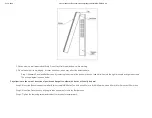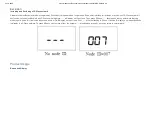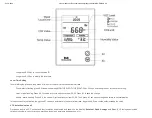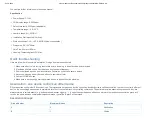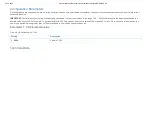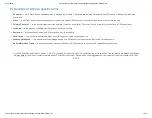
23-10-2020
manual.zwave.eu/backend/make.php?lang=en&sku=MCOEMH9-CO2
manual.zwave.eu/backend/make.php?lang=en&sku=MCOEMH9-CO2
7/10
You can find further information in the device manual.
Specification
Power Supply: DC12V
CO2 display range: 0-2000ppm
Default threshold: 1000ppm (adjustable)
Temperature range: -9.0~50 °C
Humidity range: 0%-99%RH
Installation: Wall-mounted (Vertical)
Work environment: -10~+8°C 0-90%RH(Non-condensation)
Dimension: 90* 130*28mm
Hole Pitch: 60mm or 82mm
Housing: Tempered glass+ PC Alloy
Quick trouble shooting
Here are a few hints for network installation if things dont work as expected.
1. Make sure a device is in factory reset state before including. In doubt exclude before include.
2. If inclusion still fails, check if both devices use the same frequency.
3. Remove all dead devices from associations. Otherwise you will see severe delays.
4. Never use sleeping battery devices without a central controller.
5. Dont poll FLIRS devices.
6. Make sure to have enough mains powered device to benefit from the meshing
Association - one device controls an other device
Z-Wave devices control other Z-Wave devices. The relationship between one device controlling another device is called association. In order to control a different
device, the controlling device needs to maintain a list of devices that will receive controlling commands. These lists are called association groups and they are
always related to certain events (e.g. button pressed, sensor triggers, ...). In case the event happens all devices stored in the respective association group will
receive the same wireless command wireless command, typically a 'Basic Set' Command.
Association Groups:
Group Number
Maximum Nodes
Description
1
5
Notification
2
1
Lifeline



